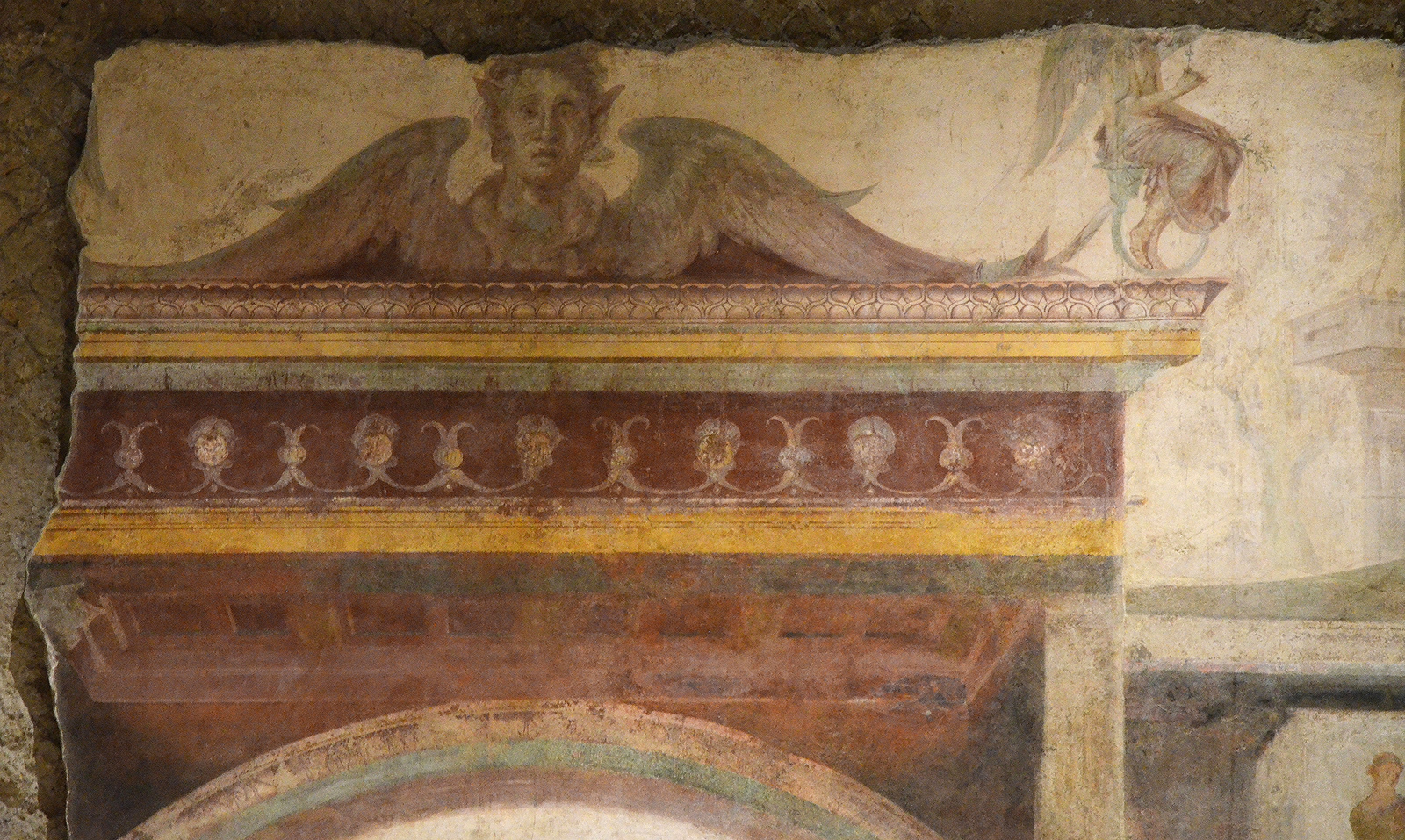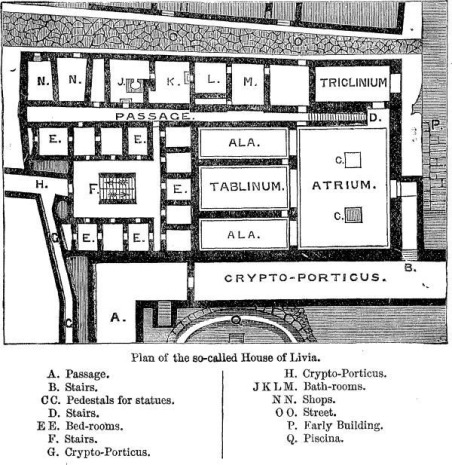I wrote about the series of special events that took place in Rome, in celebration of the 2000th anniversary of Emperor Augustus’ death. My last post focused on the ‘House of Augustus’ (see here) and today I will concentrate on the ‘House of Livia’ in this follow-up piece.
First excavated in 1839, the house has been attributed to Livia on the basis of the name IVLIA AVG[VSTA] stamped on a lead pipe on display on the left-hand wall of the tablinum. The two-storey house, built around a central atrium, was decorated with advanced “Second Pompeian Style” wall paintings, reflecting the sophisticated taste of wealthy Romans. The remains of the house are reached by a sloping hallway whose floor is covered with a black and white geometric mosaic leading into a rectangular atrium.
The best preserved section of Livia’s House consists of a rectangular atrium and three relatively large adjoining rooms (a tablinum and two side rooms). Each room was painted with a mythological subject and its floor decorated in black and white geometric mosaic.
The central room (the tablinum), also known as the “Room of Polyphemus”, was the most richly decorated. Each of its walls had a large mythological picture in the middle, set in a large columnar frame. The mythological picture on the back wall, now totally illegible, showed one of the earliest representation of the story of the monster Polyphemus and the sea nymph Galatea. It depicted Polyphemus immersed in the water with a young Cupid riding on its shoulders pursuing the nymph Galatea as she rides a sea-horse (hippocampus).
Around the central panel are backdrops of illusionistic architecture and small panels with ritual scenes.
The mythological scene on the right-hand wall of the tablinum is still partly visible. Here Mercury is depicted rescuing the mortal woman Io, who had been changed into a white heifer by Zeus in order to disguise his affair with her. Io is facing her guardian Argus while Mercury, arriving from the left, is about to free her.
The decoration on the right-hand room is characterized by luxuriant festoons and garlands of fruits, flowers, branches and leaves. A yellow frieze running along the top the frescoes was filled with scenes of everyday life in Egypt (camels, sphinxes and a statue of Isis can be seen).
The decorations on the left-hand room show winged fantasy figures, human and animal, ending in elegant plant tendrils.
The triclinium (dining room) is remarkable for its delicate decoration. Each wall was given an elaborate design of illusionistic architecture featuring a large picture of a sacred and rural landscape in the centre.
A relatively simpler architectural scheme with imitation veneer adorned the walls of the atrium and the vestibulum.
Following the expensive conservation effort, a visit to the House of Liva and Augustus can now be booked with Coopculture.it or at the Arch of Titus entrance to the Forum. Tighter restrictions on the number of visitors who can access the site at any one time have been put in place since September 2014 and you will need to book to join the 2pm English tour which runs on Saturdays, Sundays and bank holidays. The guided tour lasts 75 minutes and accommodates a maximum of 20 people. However, if you call the Coopculture call center (+39 06 399 67 700), you may join a smaller group albeit without a guide (in our case 8 people). A member of staff will escort you to the site and will remain with you for the duration of the visit (about one hour for both Augustus and Livia’s houses). Combined ticket for the Palatine-Roman Forum / Colosseum (valid for one entrance in the two sites for 2 consecutive days) or the Archaeologia Card (valid 7 days) have to be bought to get access to both Imperial houses.
















